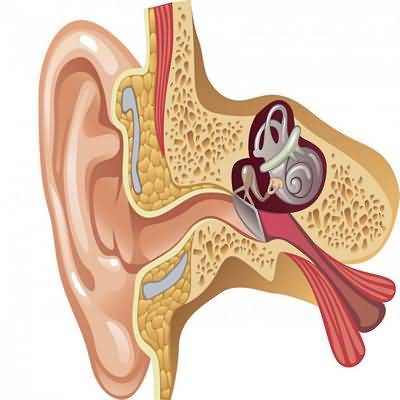eustachian tube dysfunction
eustachian tube dysfunction
eustachian tube dysfunction
The tube that connects the middle ear to the nasopharynxthe eustachian tube—provides ventilation and drainage for the middle ear cleft
It is normally closed, opening only during swallowing or yawning
When eustachian tube function is compromised, air trapped within the middle ear becomes absorbed and negative pressure results
The most common causes of eustachian tube dysfunction are diseases associated with edema of the tubal lining, such as viral upper respiratory tract infections and allergy
The patient usually reports a sense of fullness in the ear and mild to moderate impairment of hearing
When the tube is only partially blocked, swallowing or yawning may elicit a popping or crackling sound
Examination may reveal retraction of the tympanic membrane and decreased mobility on pneumatic otoscopy
Following a viral illness, this disorder is usually transient, lasting days to weeks
Treatment
with systemic and intranasal decongestants (eg, pseudoephedrine, 60 mg orally every 4–6 hours; oxymetazoline, 005% spray every 8–12 hours) combined with autoinflation by forced exhalation against closed nostrils may hasten relief
Autoinflation should not be recommended to patients with active intranasal infection, since this maneuver may precipitate middle ear infection
Allergic patients may also benefit from intranasal corticosteroids (eg, beclomethasone dipropionate, two sprays in each nostril twice daily for 2–6 weeks)
Air travel, rapid altitudinal change, and underwater diving should be avoided until resolution
Conversely, an overly patent eustachian tube (“patulous eustachian tube”) is a relatively uncommon, though quite distressing problem
Typical complaints include fullness in the ear and autophony, an exaggerated ability to hear oneself breathe and speak
A patulous eustachian tube may develop during rapid weight loss, or it may be idiopathic
In contrast to eustachian tube dysfunction, the aural pressure is often made worse by exertion and may diminish during an upper respiratory tract infection
Although physical examination is usually normal, respiratory excursions of the tympanic membrane may occasionally be detected during vigorous breathing
Treatment
includes avoidance of decongestant products, insertion of a ventilating tube to reduce the outward stretch of the eardrum during phonation and, rarely, surgery on the eustachian tube itself

















